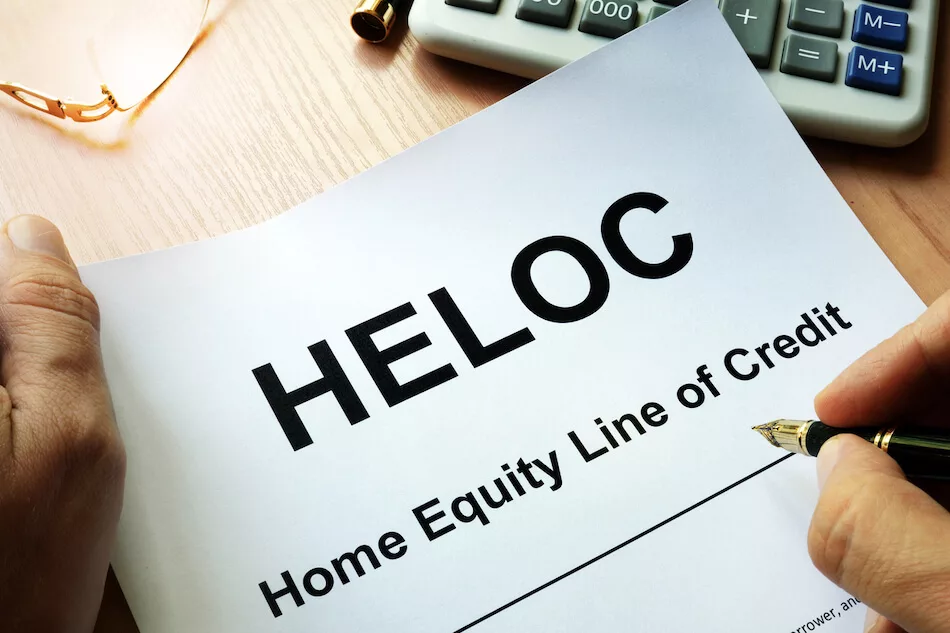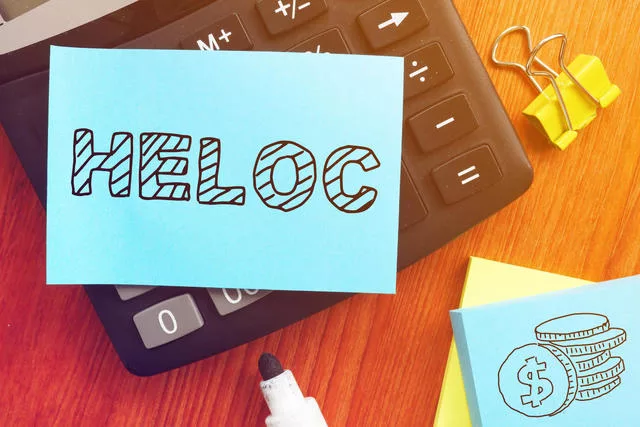Home Equity Line of Credit (HELOC) - Standalone

Equity Line of Credit Basics:
- HELOCs use the equity in your home. Although HELOCs work differently than Home Equity Loans, the difference is between your home’s value and your current mortgage balance as collateral
- Loans are secured against the equity value of your home.
- They are a revolving source of funds, similar to a credit card, that you can access as you choose.
- Most banks offer numerous ways to access funds.
- HELOCs are viewed as a standalone lien to the 1st mortgage on your home, and failure to pay could put you at risk of losing the home to foreclosure.
- The more you borrow, the bigger the risk.
HELOCs allow homeowners to take advantage of the equity they possess in their residence
A home equity line of credit (HELOC) is a line of credit that utilizes the equity you have in your home as collateral. The amount of credit available to you depends on the amount of equity you have in your home, your credit score, and your debt-to-income (DTI) ratio. Because HELOCs are secured by an asset, they tend to have higher credit limits and much better interest rates than credit cards or personal loans.
How do HELOCs work?
- HELOCs usually have variable interest rates, with some fixed-rate options and interest-only options available but usually feature variable interest rates or fixed for a certain number of years.
- HELOCs have both a draw period and a repayment period. The draw period allows minimal interest-only payments, and the repayment period requires much higher payments.
~ Withdrawal for funds access can be through an online transfer, writing a check, or using a credit card connected to your account.
- You can borrower against your credit line at any time, and unused funds do not have interest rate charges.
- Can serve as a nice emergency source of funds (as long as the bank does not require any minimum withdrawals).
- Lenders do not use points.
- Minimum Loan amount $25,000.
- Most home equity credit lines have two phases:
- First Phrase: Draw Period, can be 3, 5 or 10 years. During this period you have access to your available credit as you choose.
- Typically, HELOC contacts on require small, interest-only payments during the draw period.
- You have the option to pay extra and have it go toward the principal.
- Interest-only payments in the draw period mean payments in the repayment period can almost double
- Example: A $80,000 HELOC with a 7% APR (Annual Percentage Rate) could cost $470 a month during the first 10 years under the draw period interest only payment required. This payment can jump to around $720 a month after the draw period ends and the repayment period starts.
- After the draw period ends, you can sometimes ask for an extension.
- Second Phase: Repayment – meaning go forward you no longer have access to additional funds and you make regular principal-plus-interest payments until the balance disappears.
- Typically, HELOC contacts on require small, interest-only payments during the draw period.
Requirements
The higher your score, the lower the risk you pose of defaulting on your loan, and the lower your interest rate may be over the life of the loan.
~Minimum qualifying credit score required is around 680.
~The Lender will also review your payment history from your credit report:
***If you have missed a payment on one of your debts in the past, that missed payment may more than likely be reported to the credit bureaus who will report a record of this late on your credit report.
Lenders look at the DTI when you apply for a home equity loan. This is calculated by adding all your monthly payment debt obligations (i.e. Credit report debt, 1st mortgage lien) to the potential payment for the new home equity loan and dividing the number by your total monthly gross income.
~ DTI requirements may vary from lender to lender but, it is common to see a minimum DTI of 50% or less.
Typically, lenders prefer to see that a borrower has a steady source of income for a number of 2 years.
~ Wage Earners: 2 years most recent W-2 forms; 1 month most recent paystubs
~ Self-Employed: 1-3 years most recent tax returns – all schedules, all pages
~ Retired: Proof of Retirement income (Distribution letter, Award letter, 401k Balance, Pension Statement)
The Lender calculates the equity using your combined loan-to-value ratio CLTV = (Loan amount + Mortgage Balance)/Home Value (Appraised or Collateral Value).
~ Most lenders will let the borrower borrow up to 80% CLTV and some may allow up to 90%.
The loan-to-value (LTV) ratio must be 80% or lower to avoid mortgage insurance
Occupancy
Below are the eligible occupancy types for both Standalone and Piggyback HELOCs:
- Primary residences are eligible for the following property types:
- 1-4 unit SFR, 1 unit PUDs, and 1 unit condos
- Non-occupying co-borrowers are permitted and will be in the DTI calculation
- Second homes are eligible for the following property types:
- 1 unit SFR, 1 unit PUDs, and 1 unit condos
- Non-occupying co-borrowers are ineligible
- Investment Properties are eligible on 30 year HELOC options for the following property types:
- 1 unit SFR, 1 unit PUDs, and 1 unit condos
- Non-occupying co-borrowers are ineligible
- Investment properties and second home 2-4 units are ineligible.

